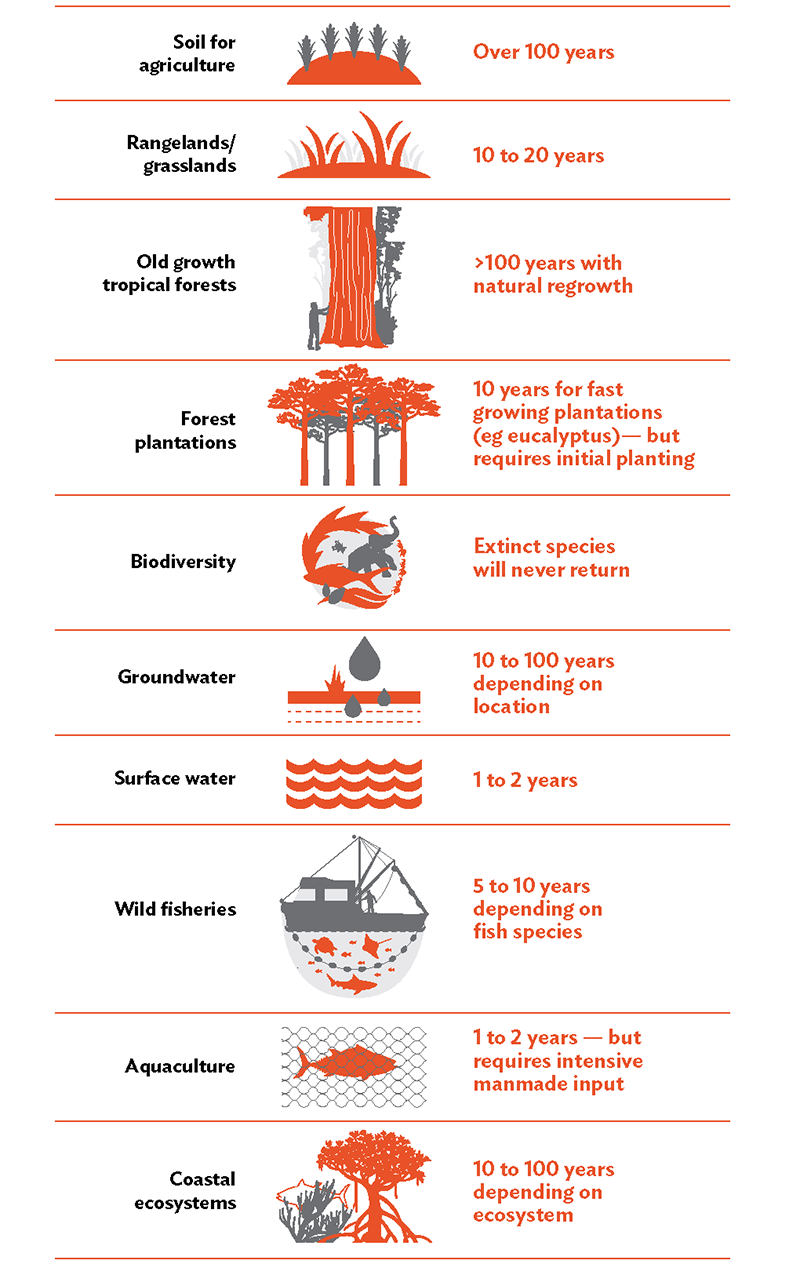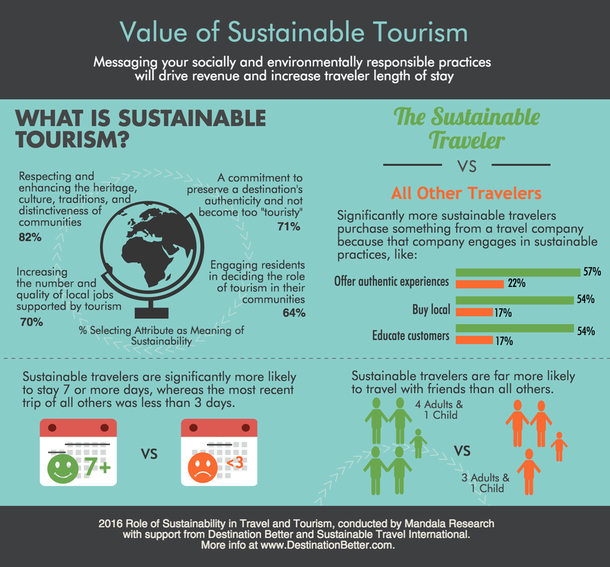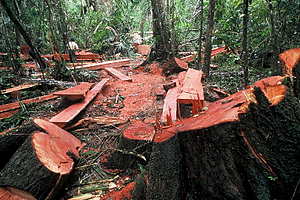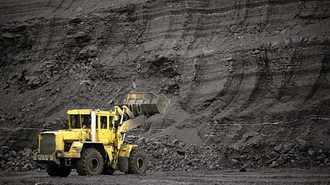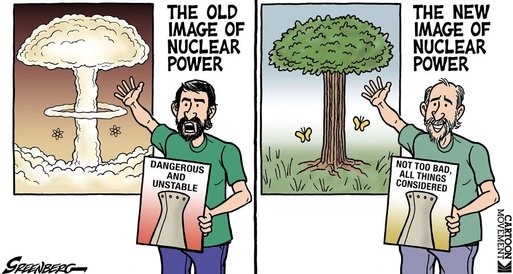Topic 8.2: Resource use in society
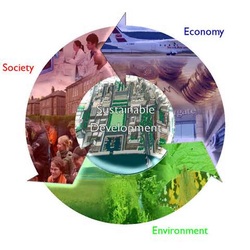 Image from tjameschawke.wordpress.com
Image from tjameschawke.wordpress.com
Ecologically minded economists describe resources as “natural capital”. If properly managed, renewable and replenishable resources are forms of wealth that can produce “natural income” indefinitely in the form of valuable goods and services.
This income may consist of marketable commodities such as timber and grain (goods) or may be in the form of ecological services such as the flood and erosion protection provided by forests (services). Similarly, non-renewable resources can be considered in parallel to those
forms of economic capital that cannot.
In this unit we will look at the three classes of natural capital, understand how cultural, economic, technological and other factors influence the status of a resource.
This unit is a minimum of 4 hours.
This income may consist of marketable commodities such as timber and grain (goods) or may be in the form of ecological services such as the flood and erosion protection provided by forests (services). Similarly, non-renewable resources can be considered in parallel to those
forms of economic capital that cannot.
In this unit we will look at the three classes of natural capital, understand how cultural, economic, technological and other factors influence the status of a resource.
This unit is a minimum of 4 hours.
Significant Ideas
- The renewability of natural capital has implications for its sustainable use
- The status and economic value of natural capital is dynamic
Big questions:
- What strengths and weaknesses of the systems approach and the use of models have been revealed through this topic?
- To what extent have the solutions emerging from this topic been directed at preventing environmental impacts. limiting the extend of the environmental impacts, or restoring systems in which environmental impacts have already occurred/
- What value systems can you identify at play in the causes and approaches to resolving the issues addressed in this topic?
- How does your own value system compare with others you have encountered in the context of issues raised in this topic?
- How are the issues addressed in this topic of relevance to sustainability or sustainable development?
- In what ways might the solutions explored in this topic alter your predictions for the state of human societies and the biosphere some decades from now?
- How do models and/or a systems approach help our understanding of resource use in society?
- Why do people use non-renewable resources rather than renewable resources?
- How do environmental value systems influence the use of renewable and non-renewable resources?
- What are your views on this?
- Outline the relationship between renewable and non-renewable resources and sustainability.
- How do you think society is likely to change in the coming years? Give reasons for your answer.
Knowledge and Understanding:
8.2.U1 Renewable natural capital can be generated and/or replaced as fast as it is being used. It includes living species and ecosystems that use solar energy and photosynthesis, as well as non-living items, such as groundwater and the ozone layer.
[“Natural capital” is often used interchangeably with the term “resource”, and the rate of its replacement is referred to as “natural income”.]
[“Natural capital” is often used interchangeably with the term “resource”, and the rate of its replacement is referred to as “natural income”.]
- Describe and explain, using examples what renewable natural capital is
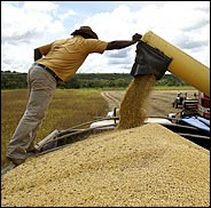
Ecosystems may provide life-supporting services such as water replenishment, flood and erosion protection, and goods such as timber, fisheries, and agricultural crops.
Ecologically minded economists describe resources as “natural capital”. If properly managed, renewable and replenishable resources are forms of wealth that can produce “natural income” indefinitely in the form of valuable goods and services.
Removing natural vegetation has a “cost”: Loss of carbon uptake, disruption of water and nutrient cycles and even just the loss of the aesthetic value all have a cost. The difficult part of natural capital is prescribing a “value” in economic terms to the goods and services the biosphere provides.
Ecologically minded economists describe resources as “natural capital”. If properly managed, renewable and replenishable resources are forms of wealth that can produce “natural income” indefinitely in the form of valuable goods and services.
- marketable commodities such as timber and grain (goods)
- ecological services such as the flood and erosion protection provided by forests (services).
- non-renewable resources cannot generate wealth without liquidation of the estate.
Removing natural vegetation has a “cost”: Loss of carbon uptake, disruption of water and nutrient cycles and even just the loss of the aesthetic value all have a cost. The difficult part of natural capital is prescribing a “value” in economic terms to the goods and services the biosphere provides.
8.2.U2 Non-renewable natural capital is either irreplaceable or can only be replaced over geological timescales; for example, fossil fuels, soil and minerals.
- Describe and explain, using examples what non- renewable natural capital is
- Is it ever ethical to use non-renewable resources? Justify your answer

Non-renewable natural capital exist in finite amounts on Earth. Once consumed/used, they are not replaced. Non-renewable resources may have solar radiation as an energy source, but usually only indirectly. Minerals and fossil fuels are classic examples of non-renewable resources. These are considered nonrenewable resources in that their use is not sustainable because their formation takes billions of years.
8.2.U3 Renewable natural capital can be utilized sustainably or unsustainably. If renewable natural capital is used beyond its natural income this use becomes unsustainable.
- Explain how renewable natural capital can be managed sustainably or unsustainably in relation to natural income.
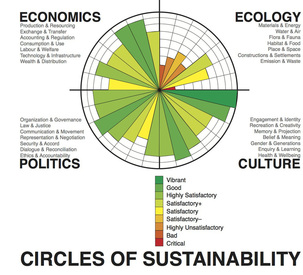 image from en.wikipedia.org
image from en.wikipedia.org
Sustainability is living, within the means of nature, on the ”interest” or sustainable income generated by nature capital. So using the global resources at the rate that allows natural regeneration and minimizes damage to the environment.
Some economists may view sustainable development as a stable annual return on investment regardless of the environmental impact, whereas some environmentalists may view it as a stable return without environmental degradation. Consider the development of changing attitudes to sustainability and economic growth, since the Rio Earth Summit (1992) leading to Agenda 21.
Sustainability can be encouraged by:
International summits on sustainable development have highlighted the issues involved in economic development across the globe, yet the viewpoints of environmentalists and economists may be very different.
Some economists may view sustainable development as a stable annual return on investment regardless of the environmental impact, whereas some environmentalists may view it as a stable return without environmental degradation. Consider the development of changing attitudes to sustainability and economic growth, since the Rio Earth Summit (1992) leading to Agenda 21.
Sustainability can be encouraged by:
- ecological land-use to maintain habitat quality and connectivity for all species.
- sustainable material cycles, (ex carbon, nitrogen, and water cycles).
- social systems that contribute to a culture of sufficiency that eases the consumption pressures on natural capital.
International summits on sustainable development have highlighted the issues involved in economic development across the globe, yet the viewpoints of environmentalists and economists may be very different.
8.2.U4 The impacts of exaction, transport and processing of a renewable natural capital may cause damage, making this natural capital unsustainable.
- Explain how extraction, transport and processing of a renewable natural capital may cause the exploitation of natural capital unsustainable
- Explain with examples how the use of renewable resources can become unsustainable.
 https://journals.plos.org/plosone/article?id=10.1371/journal.pone.0164460
https://journals.plos.org/plosone/article?id=10.1371/journal.pone.0164460
The extraction, transport and processing of renewable natural capital can have a huge negative impact making this natural capital unsustainable
Amazon Rainforest:
Amazon Rainforest:
- increased soil erosion
- leaching of nutrients
- decreased water quality
- possible landslides
- eutrophication
- sedimentation
- increase of greenhouse gases from transport
- reduction of biodiversity
8.2.U5 Natural capital provides goods (such as tangible products) and services (such as climate regulation) that have value. This value may be aesthetic, cultural, economic, environmental, ethical, instrinsic, social, spiritual or technological.
- Discuss how natural capital provides goods and services.
- Explain how the value of natural capital is dependent on many factors including aesthetic, cultural, economic, environmental, ethical, intrinsic, social, spiritual and technological.
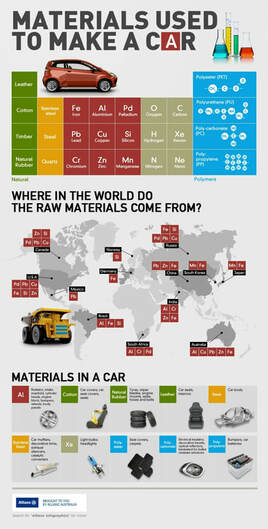 image from https://visual.ly/community/infographic/transportation/materials-used-make-car-0
image from https://visual.ly/community/infographic/transportation/materials-used-make-car-0
Organisms or ecosystems have value:
Organisms or ecosystems that are valued on aesthetic or intrinsic grounds may not provide commodities identifiable as either goods or services, and so remain unpriced or undervalued from an economic viewpoint. Organisms or ecosystems regarded as having intrinsic value, for instance from an ethical, spiritual or philosophical perspective, are valued regardless of their potential use to humans. Therefore, diverse perspectives may underlie the evaluation of natural capital. Attempts are being made to acknowledge diverse valuations of nature (for example, biodiversity, rate of depletion of natural resources) so that they may be weighed more rigorously against more common economic values (for example, gross national product (GNP)). However, some argue that these valuations are impossible to quantify and price realistically. Not surprisingly, much of the sustainability debate centers on the problem of how to weigh conflicting values in our treatment of natural capital.
How can we quantify values such as aesthetic value, which are inherently qualitative?
- Intrinsic values: values that are not determined by their potential use to human, their value is given vary by culture, religion, etc. E.g. a statue
- Economic value-: value that are determined from the market price of the good and services a resources produce.
- Ecological Value: value that have no formed market price but are essential to human e.g. photosynthesis
- Aseptic Value: no market price, similar to ecological value,(basically things that look good). E.g. landscape
Organisms or ecosystems that are valued on aesthetic or intrinsic grounds may not provide commodities identifiable as either goods or services, and so remain unpriced or undervalued from an economic viewpoint. Organisms or ecosystems regarded as having intrinsic value, for instance from an ethical, spiritual or philosophical perspective, are valued regardless of their potential use to humans. Therefore, diverse perspectives may underlie the evaluation of natural capital. Attempts are being made to acknowledge diverse valuations of nature (for example, biodiversity, rate of depletion of natural resources) so that they may be weighed more rigorously against more common economic values (for example, gross national product (GNP)). However, some argue that these valuations are impossible to quantify and price realistically. Not surprisingly, much of the sustainability debate centers on the problem of how to weigh conflicting values in our treatment of natural capital.
How can we quantify values such as aesthetic value, which are inherently qualitative?
8.2.U6 The concept of a natural capital is dynamic. Whether or not something has the status of natural capital, and the marketable value of the capital varies regionally and over time and its influenced by cultural, social, economic, environmental, technological and political factors. Examples include cork, uranium and lithium.
[The valuation of natural capital can be divided into the following two main categories. 1)Use of valuation: resources that have a price—marketable goods, ecological functions, recreational function. 2) Non-use of valuation: resources that have intrinsic value (the right to exist), future uses (medicines, potential gene pool), existence value (Amazon rainforest), present for future generations]
[The valuation of natural capital can be divided into the following two main categories. 1)Use of valuation: resources that have a price—marketable goods, ecological functions, recreational function. 2) Non-use of valuation: resources that have intrinsic value (the right to exist), future uses (medicines, potential gene pool), existence value (Amazon rainforest), present for future generations]
- Explain how natural capital is dynamic in nature and how its value and status changes over time and space according to cultural, social, economic, environmental, technological and political factors.
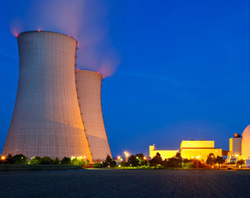 image from www.energy4me.org
image from www.energy4me.org
The value of resources changes over time and with various other factors. During the Stone Age, fossil fuels were worthless because the internal-combustion engine had not yet been invented, but arrowheads were very valuable because they allowed people to hunt and therefore eat. In modern times, we need fossil fuels to maintain many of the processes in society (communication, transportation, electricity production), so that fossil fuels have a high economic value now, but because we've developed many different ways to get enough food to eat, the arrowheads are no longer economically valuable.
Resources may have different dollar values assigned to them depending on the value that is being measured. Some values are pretty straightforward to measure (i.e. the market value of a mineral traded on global exchanges) while others are more difficult to calculate (How much is a 'beautiful view' worth?).
Lithium batteries are a relatively recent development and are used widely in micro-electronics. Mobile phones, for example, contain lithium batteries. It is especially important for the production of e-car batteries. This has meant that the value of lithium as a resource has increased dramatically.
Resources may have different dollar values assigned to them depending on the value that is being measured. Some values are pretty straightforward to measure (i.e. the market value of a mineral traded on global exchanges) while others are more difficult to calculate (How much is a 'beautiful view' worth?).
Lithium batteries are a relatively recent development and are used widely in micro-electronics. Mobile phones, for example, contain lithium batteries. It is especially important for the production of e-car batteries. This has meant that the value of lithium as a resource has increased dramatically.
Application and Skills
8.2.A1 Outline an example of how renewable and non-renewable natural capital has been mismanaged[
[Consider at least two examples of how the status of natural capital can vary.]
[Consider at least two examples of how the status of natural capital can vary.]
Resource depletion is an economic term referring to the exhaustion of raw materials within a region. Use of resources beyond their rate of replacement is considered to be resource depletion.
Renewable Natural Capital
Non-renewable Natural Capital
Renewable Natural Capital
- African forests are significantly shrinking. Trees and vegetation cover are being cut down for various uses. Most of the people use firewood as the energy source. Also, most of people’s livelihood depends on forests as well as land, leading to the increased deforestation. Generally it is one the environmental challenges in Malawi and developing countries at large. For example in Malawi about 10,000 ha.forests were being deforested annually between 1981 to 1985. This number continues through today.
Non-renewable Natural Capital
- At present, the most important energy sources used by the Indian population are non-renewable sources of energy. Indian economy is largely based on fossil fuels, minerals and oil. The value increases because of the large demand, but the supply is decreasing. This has resulted in more efforts to drill and search other territories. The environment is being abused and this depletion of resources is one way of showing the effects. The consumption of petroleum has multiplied itself almost thirty times in the post-independence era
8.2.A2 Explain the dynamic nature of the concept of natural capital.
Cultural, economic, technological and other factors influence the status of a resource over time and space. For example, uranium, due to the recently become a valuable resource. What this all means is that resources are dynamic, its status may change, it might become valuable.
- different society value resources differently
- increase in demand may increase the value of a resource
- Supply of resources may influence the value of a resource
Key Terms
|
natural capital
fossil fuel sustainability optional value packaging cultural service indirect use tragedy of commons destination footprint |
natural income
replenishable goods existence values marketing ecosystem services optional values recyclable ecotourism |
rate of harvest
economic value dynamic regeneration supporting services direct use existence values resource depletion ESI |
renewable
ecological value intrinsic value harvesting regulating services consumptive use recreational value sustainable yield |
non-renewable
aesthetic value recreational processing provisioning service non-consumptive RNC business-as-usual |
Classroom Materials
Sustainable and Unsustainable Use of Resource Case Study.
Case Studies
Sustainable and Unsustainable Use of Resource Case Study.
Case Studies
- Brief examples of the four types of ecosystem services (supporting, regulating, provisioning, cultural) with a basic understanding of their importance
- 1 case study each of a non-renewable and renewable resource & how it is dynamic and has changed over time
Powerpoint and Notes Adapted from Brad Kremer and PBrooks
Your browser does not support viewing this document. Click here to download the document.
Your browser does not support viewing this document. Click here to download the document.
Correct use of terminology is a key skill in ESS. It is essential to use key terms correctly when communicating your understanding, particularly in assessments. Use the quizlet flashcards or other tools such as learn, scatter, space race, speller and test to help you master the vocabulary.
Useful Links
The Sustainable Scale Project
List of Natural Resources - Buzzle
National population pyramids
A case study: The Peruvian Anchovy (Engraulis ringens) - Open Door
Rio Declaration on Environment and Development - UN
In The News
How the world’s oceans could be running out of fish - BBC Future News 21 September 2012
This is a great article about agroforestry in the Sahel as a model of sustainable agriculture - Scientific American 28 January 2011
Overfishing and ecologically sustainable yield in Jamaica - from American Scientist magazine
According to the film, The End of the Line: The World Without Fish, scientists predict that if we continue fishing as we are now, we will see the end of most seafood by 2048. The link is to the 1st of 3 parts on YouTube; you can follow the remaining 2 parts from there.
UN Agenda 21 - This is the ‘Chapter 8’ referred to in the Natural capital and sustainability.doc worksheet from class
To get the Gold, They Will Have To Kill Every One Of Us Salon Feb 10, 2013
The “Zero Waste” grocery store – A Berlin shop which has developed a sustainable shopping model with the goal of reducing solid domestic waste.
International-mindedness:
- There are marked cultural differences in attitudes to the management of natural capital.
TOK:
- As resources become scarce, we have to make decisions about how to use them-to what extent should potential damage to the environment limit our pursuit of knowledge?
Video Clips
National Geographic Explorer Nzigiyimpa Leonidas defines 'natural resources.'
We're familiar with the consequences of overspending, but when we overspend on the environment we risk bankrupting our greatest gift.
Naturalogic aims to identify natural capital dependency across organizations, products, supply chains and investments and to manage risks from increasing environmental costs to ultimately build more sustainable business models and brands.
Plants, animals, even entire ecosystems are disappearing from the Earth. So what? In "What Is Nature Worth?", the University of Minnesota's Institute on the Environment offers a three-minute look at what biodiversity loss is really costing us -- and what we can do about it.
Explore what makes trees a vital part of cities, and how urban spaces throughout history have embraced the importance of trees.
Every year, the world uses 35 billion barrels of oil. This massive scale of fossil fuel dependence pollutes the earth, and it won’t last forever. On the other hand, we have abundant sun, water and wind, which are all renewable energy sources. So why don’t we exchange our fossil fuel dependence for an existence based only on renewables?
An FAO programme that helps local communities in Mongolia to protect their own forests is being seen as a model for action in the Asia-Pacific region. The Participatory Forest Management project has effectively stopped illegal logging and forest fires in 15 pilot districts since it began in 2007, and is set to go nationwide when the pilot program ends in January 2012.
Cellulosic ethanol is one of the simplest and least expensive biofuels to make from cellulosic biomass. Most ethanol sold in the Pacific Northwest is made from corn grown in the Midwest. AHB is working to make ethanol more sustainable in the PNW by producing cellulosic ethanol from locally grown poplar trees.
From its extraction through sale, use and disposal, all the stuff in our lives affects communities at home and abroad, yet most of this is hidden from view. The Story of Stuff is a 20-minute, fast-paced, fact-filled look at the underside of our production and consumption patterns
The creators of YERT have recently announced that they are now working on a DOCUMENTARY FEATURE FILM about SOLAR ROADWAYS
In this video Paul Andersen explains how the resources required for survival come from the Earth. The resources are not evenly distributed on the planet and neither are the humans. According to the NGSS we need to limit the use of nonrenewable resources (like oil and coal) through regulations and increase the use of renewable resources
Every day, we use materials from the earth without thinking, for free. But what if we had to pay for their true value: would it make us more careful about what we use and what we waste? Think of Pavan Sukhdev as nature's banker -- assessing the value of the Earth's assets. Eye-opening charts will make you think differently about the cost of air, water, trees ..
The presentation focuses on the need to address natural resource degradation, governance and benefit-sharing as fundamental components of peacebuilding in Afghanistan and other post-conflict countries
We often hear the words 'sustainable' and 'sustainability' in our daily lives. But what does sustainability mean? And why is it so important? explainity tries to shed some light on these questions
Jonathon Porritt, is an eminent writer, broadcaster and commentator on sustainable development. He is Co-Founder of Forum for the Future, the UK's leading sustainable development charity.
He is Co-Director of The Prince of Wales's Business and Sustainability Programme, was formerly Director of Friends of the Earth
He is Co-Director of The Prince of Wales's Business and Sustainability Programme, was formerly Director of Friends of the Earth
The big blue buildings of Ikea have sprouted solar panels and wind turbines; inside, shelves are stocked with LED lighting and recycled cotton. Why? Because as Steve Howard puts it: "Sustainability has gone from a nice-to-do to a must-do." Howard, the chief sustainability officer at the furniture megastore, talks about his quest to sell eco-friendly materials and practices -- both internally and to worldwide customers -- and lays a challenge for other global giants
Rob Hopkins reminds us that the oil our world depends on is steadily running out. He proposes a unique solution to this problem -- the Transition response, where we prepare ourselves for life without oil and sacrifice our luxuries to build systems and communities that are completely independent of fossil fuels.
For thousands of years, they lay dormant in the soil until suddenly, they became the driving force behind a technical revolution: rare earths. Researchers drill for new deposits and find more environmentally friendly ways of processing the materials. A fascinating glimpse at cutting-edge research that could make our green technologies of the future even greener.
